Posts Tagged: hornworm
The Hornworms Are Not Your Friends
If you love tomatoes, you probably hate hornworms. Frankly, the garden's not big enough for both of you, and one of you has to go. It's not...
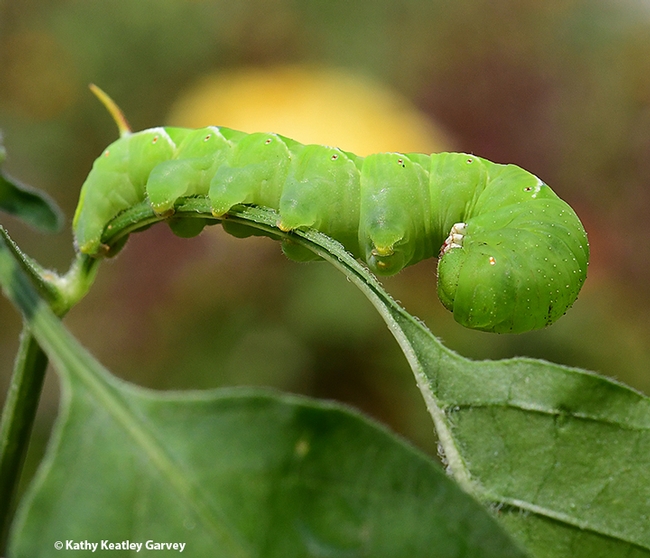
This hornworm is feeding on a pepper plant. (Photo by Kathy Keatley Garvey)
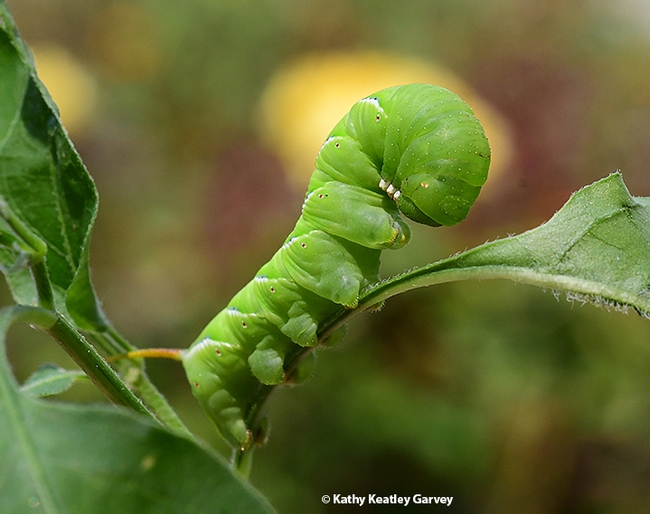
When the caterpillar or larva is disturbed, it "rears up into an Egyptian sphinx-like pose," says entomologist Jeff Smith, curator of the Lepidoptera collection at the Bohart Museum of Entomology. (Photo by Kathy Keatley Garvey)
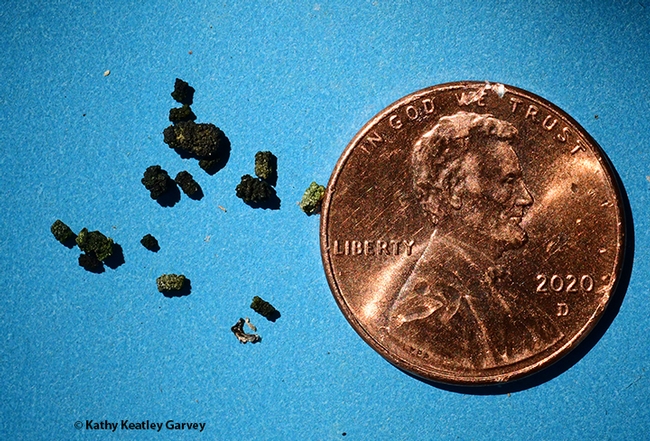
The frass (droppings) from a hornworm. It's a tell-tale sign you have hornworms in your garden. (Photo by Kathy Keatley Garvey)
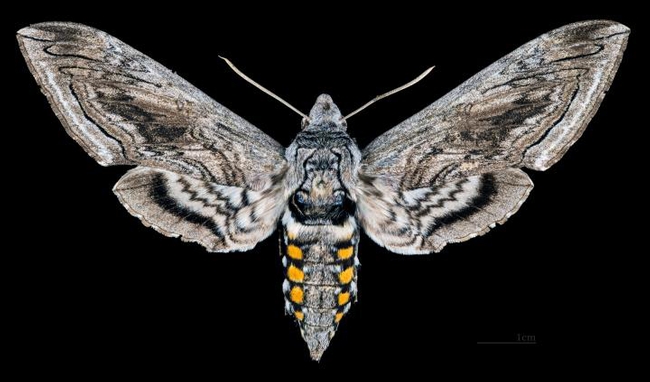
The tomato hornworm turns into a sphinx moth or hummingbird moth (family Sphingidae). (Wikipedia Photo)
Hornworm
Two years ago in mid-August, the fall semester had just begun at Solano Community and I got pretty busy with Horticulture classes and work projects. I knew the time was nigh to wrap things up on my seven tomato plants. They were starting to look ratty but were still producing and, since temperatures were in the 80's, I continued watering but was not in the yard much and not monitoring for aphids. Two weeks later, they were covered with 20-30 hornworms. Wow, what a sight! First time ever. I had no idea I should have been watching for them.
My plants did not do well this year (I've heard that from a lot of people), and it seems I was cutting off "dried up" leaves all season. I'm glad I only planted two. The cherry tomatoes were making a comeback in September after cutting them back (see photo). But it was definitely time to pull the other plant that seemed particularly debilitated all season. Well, there they were, two little buggers feasting and, seeing their size (2½") and the "trails" on the tomatoes, they'd been at it awhile. But, then, they don't need much time to gobble things up. I was just glad to see only two.
So, take heed. As August develops and September is nigh, as the season wanes and plants weaken, stay on top of things and continue to monitor ALL of your plants for damaging insects. Hornworms drop to the soil and burrow and, although many will not survive, some will emerge again next year.
I tried to include specimens, various views and measurements in a single photo, but they squirmed and moved toward one another (for comfort?) as I tried to manipulate them. It’s fascinating to see such creatures close-up.
These beasts are Tobacco hornworms (Manduca sexta) , which have 7 diagonal stripes on each side of the body. The Tomato hornworm (Manduca quinquemaculata) has 8 chevron-shaped stripes (chevron is a "V" or boomerang-like shape).
LIFECYCLE = http://www.ipm.ucdavis.edu/PMG/GARDEN/VEGES/PESTS/LIFECYCLE/lchornworm.html
GUIDELINES = http://www.ipm.ucdavis.edu/PMG/r783301111.html
TOMATO vs. TOBACCO HORNWORM = http://entnemdept.ufl.edu/creatures/field/hornworm.htm
TOMATO HORNWORM PHOTO = http://www.colostate.edu/Depts/CoopExt/4DMG/Pests/tomato.htm
OTHER TOMATO DAMAGE = http://www.ipm.ucdavis.edu/PMG/C783/m783hpothrpests.html
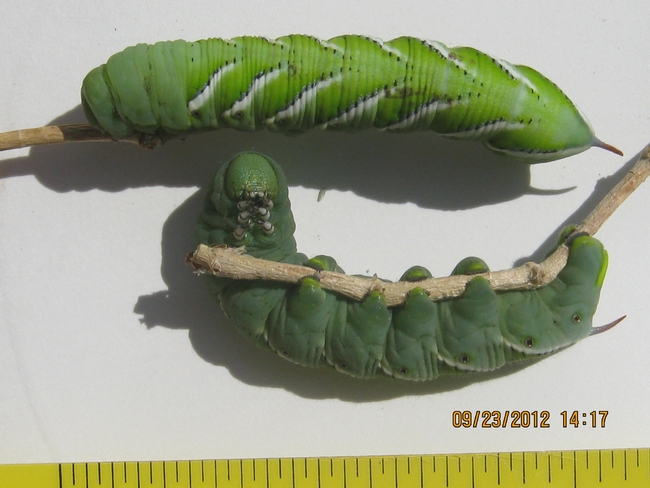
Both varieties of tomato hornworm. (photos by Susan Croissant)
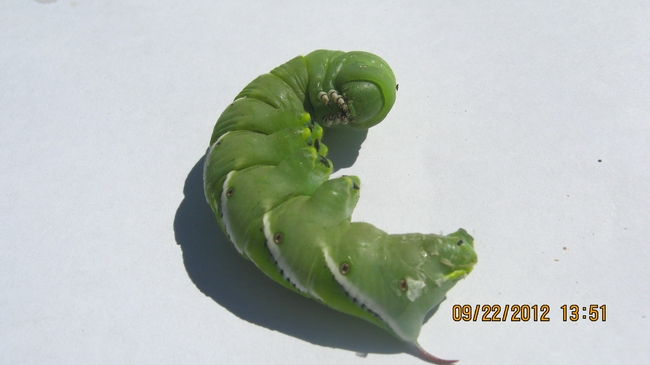
The face of the tomato hornworm.

Impressive size of the tomato hornworm.
Big on Butterflies
Our cat is an entomologist. She has no formal training in the science of insects, but she can catch insects with the best of 'em. Plus, her...

Xena the Warrior Princess is a feline entomologist. She specializes in butterflies and sphinx moths. (Photo by Kathy Keatley Garvey)

Our feline entomologist collects moths. This is probably a sphinx moth, the adult form of the tomato hornworm (Manduca sexta (Linnaeus). (Photo by Kathy Keatley Garvey)

